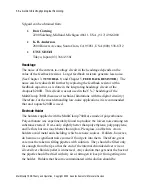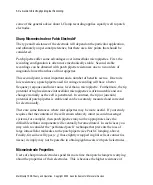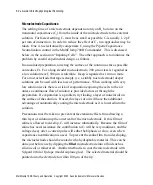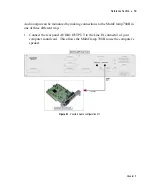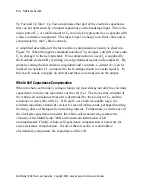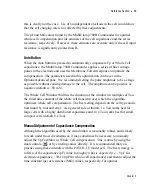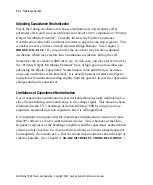
72
•
Reference Section
Bath Headstage and Electrodes
The Bath Headstage is used when recording from cells with a large conductance, in
order to minimize errors due to current flow through the bath electrode. The VG-2
series Bath Headstage is optional hardware that can be used with the MultiClamp
700B for this purpose.
In most experiments, the bathing solution is grounded by a solid grounding
electrode (such as an agar/KCl bridge) and all measurements are made relative to
the system ground (on the assumption that the bath is also at ground). This
assumption may not be true if the Cl- concentration or the temperature of the
bathing solution is significantly changed, if there is restricted access from the
extracellular space to the grounding point, or if the membrane current is sufficiently
large as to cause a significant voltage drop across the resistance of the grounding
electrode. The latter circumstance, which normally arises only when voltage
clamping large cells with large membrane currents, is the situation for which the
bath headstage is intended.
In a simple voltage clamp setup, the voltage drop across the resistance of the bath
grounding electrode (R
b
) is indistinguishable from the membrane potential. That is,
the potential recorded by the microelectrode is the sum of the transmembrane
potential (V
m
) and the voltage drop across R
b
. Problems arise if the product of the
clamp current (I) and R
b
is significant. For example, for I = 5
µ
A and R
b
= 2 k
Ω
,
the voltage error is 10 mV.
To minimize this problem with the MultiClamp 700B, the following two strategies
can be adopted.
R
b
Minimization
There are three main contributors to R
b
:
•
The cell access resistance from the membrane surface to the bath
•
The resistance of the grounding pellet
MultiClamp 700B Theory and Operation, Copyright 2005 Axon Instruments / Molecular Devices

